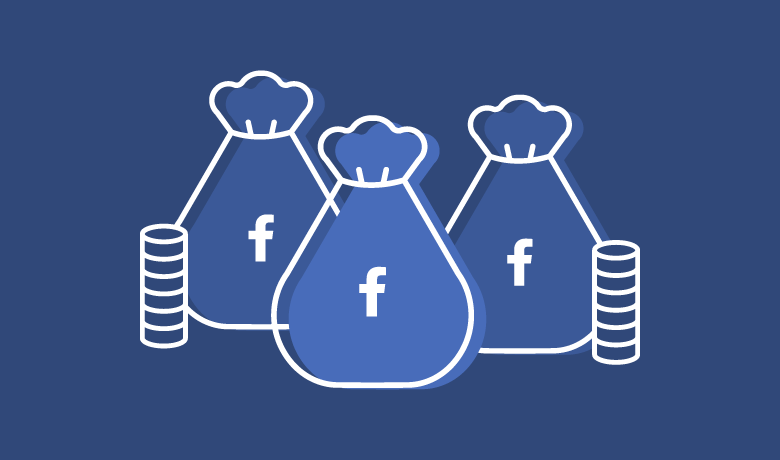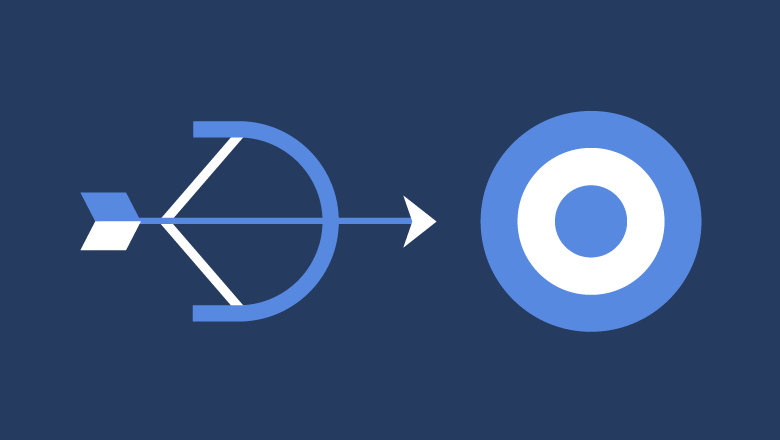
Social Media Advertising
Social media advertising: How it works and tips for success
Entering the realm of social media advertising? This article explores why it’s crucial, its mechanics and tips to make your ads shine in the crowded digital space.
Reading time 8 minutes
Published on May 2, 2023

Table of Contents
Summary
- Social media advertising is crucial for modern marketing. Paid ads are now expected by brands rather than low-priority or exceptions.
- The sophistication of social media advertising allows for personalized targeting, creative formats and ads that feel authentic. This provides brands with ample opportunities to engage with their audience effectively.
- Additionally, there is an opportunity for brands to leverage apps like Instagram and TikTok for product research. With increasing reliance of shoppers on platforms like Instagram and TikTok, there are countless posts demonstrating products in action that are highly sought after.
Social media advertising is a linchpin of modern marketing.
And for brands today, paid ads are an expectation rather than an exception to the rule.
Consider how shoppers rely on apps like Instagram and TikTok for product research. Posts showing products in action are the most in-demand type of social content right now.
Brands can't ignore how ads fit into their social media marketing strategies.
The good news? Brands aren't limited to one-size-fits-all social ads anymore.
Personalized targeting. Creative formats. Ads that don't feel like ads.
All of the above are at your fingertips. That's only if you you understand how social media advertising works. That's exactly what we'll cover in this post.
- What is social media advertising?
- How social media advertising differs from organic content
- Benefits of social media advertising
- Examples of social media advertising
- How social media advertising works
- Tips for social media advertising
What is social media advertising?
Social media advertising refers to any paid marketing campaign on social media.
These campaigns reach specific people based on their interests, demographics and behavior. Through ads, brands can send targeted promotions to prospects and past customers alike.
Chances are you consistently engage with (or at least see!) social ads on a daily basis. Below is an example that you might see scrolling through Instagram.

Advertising on social media has become more sophisticated in recent years. Gone are the days of boring, one-size-fits-all promotions that feel like random billboards.
Also, platforms like Meta have automated some of the more daunting aspects of running ads in the past. This includes targeting new customers and retargeting past ones.
We'll bite: you'd be hard-pressed to find someone that says they love seeing ads. That said, research says that consumers are now more willing to engage with relevant ads. The keyword here is "relevant."
This shows the value of creativity and thoughtful messaging when running paid campaigns.

From unboxings to interactive promotions, brands can run ads tailor-made for unique audiences. Not to mention personal and more human than a "BUY NOW!" ad.
How does social media advertising differ from organic content?
A well-crafted social ad might look exactly like an unpaid post.
Heck, sometimes you can't even tell the difference if it weren't for the "Sponsored" label."
The obvious difference between paid and organic social media is the price tag. Beyond that, also consider:
- Ads aren't tied to the whims of social media algorithms. Paid targeting and bidding can be complicated. That said, there's a guarantee that at least some people will see your ads. This includes people that don't follow you. Contrast this with organic posts that could get buried by the algorithm.
- Ads contain specific calls-to-actions ("try our demo" or "shop now"). They likewise lead to specific landing pages attached to your ads.
- Organic social media is ongoing, ads are time-sensitive. Some brands cycle through ad campaigns on a consistent basis. Still, social media advertising is contingent on your business initiatives and budget. On the flip side, brands must keep up their organic presence whether or not they're running ads.
Benefits of social media advertising
Marketers understandably have to pick and choose their tactics carefully. This is especially true when budgets are tight or you need to prove ROI. Below are some of the key reasons why ads are worthwhile for brands.
Ads help brands squeeze more out of their organic presence
If you feel like your social posts are getting less reach lately, you're not alone.
Falling organic reach plagues most brands these days, especially on Facebook and Instagram.
Like it or not, social algorithms are giving more real estate to paid versus organic content. More brands investing in paid social means shrinking organic reach.
Brands should view this as a chance to squeeze more out of their organic social presence. What you do organically can directly impact and optimize your paid campaigns.
For example, consider using your best organic content as the basis for an ad campaign. It's easier than ever to boost top-performing posts or run influencer content as ads, too.
Build awareness with audiences you couldn't otherwise reach
A lack of organic reach makes engaging with new audiences an uphill battle.
The same even applies to past customers and people that follow you. After all, there's no guarantee that even your followers will see your organic content.
This is where ads can save the day. Modern social media advertising allows brands to hyper-target audiences based on specific parameters. This includes:
- Prospects and leads who've visited your website
- People who've purchased from you before
- New potential customers that resemble your brand's target demographic
Quickly gather valuable information about your brand and audience
The depth of modern ad analytics can be daunting for brands.
That said, what you learn from your campaigns can be a goldmine of marketing data. Ads provide a way to measure the performance of different ad creatives, offers, CTAs and more.
Data gathered from these campaigns represent real people, not hypotheticals. Even a small-scale test can be eye-opening in terms of learning more about your customers. Think of ads as a scalable way to conduct market research.
Examples of social media advertising
Brands are spoiled for choice when it comes to the types of promotions they run.
Below are some social media advertising examples that scratch the surface of what you can do.
Static image ads
Static image ads are pretty straightforward. Single-image ads often highlight a specific product, sale or offer. Many brands make these pop with bold colors and captions that create FOMO.

Video ads
As noted early, consumers at large really want to see products in action. Video ads can balance entertainment and education when it comes to your products. Bonus points if your videos feature real-life customers or creators.
If nothing else types of ads serve as a natural hook and grab the attention of serial scrollers. The fact that Reels and TikToks are so popular right now reflects the effectiveness of video ads.

Carousel ads
It's well-documented that Carousel content performs well organically on Instagram. Slideshows provide an opportunity to show off multiple products from multiple angles. This provides shoppers with a complete view of what you're offering. With Carousels, a single ad can appeal to different types of customers at the same time.

Stories ads
Anything you can do to serve ads without interrupting potential customers is a plus. That's part of what makes ads in the Stories ads so notable. The key is to immediately hook viewers from the first frame to pique their interest. Bold colors and headlines plus a video format do the trick.

Branded content ads (AKA Spark ads on TikTok)
The common thread between most of these social advertising examples?
Featuring real people helps them stand out. These types of ads resemble organic content at a glance and that makes them so powerful.

Branded content ads allow you to take posts from creators on Instagram or TikTok and promote them as ads. Doing so should be on the radar for any brand that already invests in influencer marketing.
How social media advertising works
There are a lot of moving pieces involved in any given ad campaign. Below is a high-level overview of the steps required to get an ad up and running.
Bidding and targeting
The concept of bidding is something to understand when advertising with Meta. Without getting too into the nitty-gritty, here's how it works:
- Meta ads work in a so-called "auction" system. You can almost think of this as competing for prime-time ad placements on TV. Meta determines which brands get their ads served to people based on relevancy. The idea is that your ad "wins" when it's set to serve people who'd be most likely to engage with them.
- You set a timeline and budget for your ad campaign. With a lifetime budget, Meta will determine the optimal way to serve your ads until your budget is spent. With daily ad budgets, you can set a limit on how much you're willing to spend on individual ad sets per day.
- You set up ad targeting to determine who your ads will reach. For example, you can set up ads to reach new customers that resemble your current customers. You can also target audiences based on customer lists, website visits and more.

How you define your audience is up to you but Meta can do a lot of hand-holding to walk you through the process. This applies to bidding and targeting alike.
Goals and objectives
Pop quiz: why do you want to invest in social media advertising in the first place?
This isn't a trick question! Big-picture goals will help you define specific objectives to optimize your campaign performance.
For example, are you trying to build awareness? Hype up a launch? Earn more traffic? All of the above are fair game in terms of goals. Social platforms will tailor your ad targeting and setup based on your goals via campaign objectives.
Here's a snapshot of the campaign objectives available on Facebook and Instagram:
- Sales
- Leads (lead generation)
- Engagement
- Traffic
- Awareness
- App promotion
Meanwhile, here are the ad objectives on TikTok.
- Awareness (reach)
- Consideration (traffic, views, community interactions)
- Conversion (product sales, website conversions, lead generation, app promotion)
Once you define your elements, you're responsible for filling in the blanks to determine what your ads will actually look like.
Creatives
Piggybacking on the point above, your ad creatives are the "meat" of your campaigns. In other words, what people are going to get served.
When we talk about the many moving pieces of a campaign, creatives are make-or-break. Consider the anatomy of any given social ad including:
- Messaging and copy
- Calls-to-action
- Format (think: photo versus video)
- Color scheme
- Audio
- Discounts and offer amount
Some brands will actually run variations of the same ad with different creatives. This can be done for testing purposes and likewise serve as a way to reach multiple audiences with the same ad.

Tips for social media advertising
To wrap things up, let's review some quick tips for brands considering ad campaigns on social media.
Be ready to experiment with different campaigns
Knocking your first set of social ads out of the park is a tall order.
Thankfully, a little bit of experimenting can go a long way toward optimizing your campaigns. Rather than go head-first into ads, consider running small-scale tests first.
From formats to copy and beyond, there are so many variables that go into any given ad set. Be prepared to make a few tweaks before finding what works.
Use a social media marketing tool to make informed decisions
If you're stuck in terms of what you should run as an ad, look no further than your organic presence.
For example, your analytics and past engagement can serve as a treasure trove of insight for your ad campaigns. This is especially true if you're using a social media management tool like Sprout Social.
Sprout makes it a cinch to identify your top-performing content and messaging to repurpose as ads. Not to mention which networks would be prime for your next campaign.

The more granular you get with your data, the more confident decisions you can make with your ads.
The fact that Sprout allows you to track your organic and paid efforts side-by-side is a nice added bonus. Doing so gives you a more holistic understanding of your social media advertising efforts.
Make your ads as personable as possible
We'll say it again: the more your ads resemble organic content, the better.
There's a reason why TikTok's mantra is "Make TikToks, not ads." Authentic and unfiltered ads have proven effective on TikTok. Brands can apply the same approach to Instagram, too. Creator-based ads serve as a way to make your ads instantly feel less sales-y.

Is social media advertising on your radar?
Social media advertising campaigns are becoming a matter of “when” rather than “if” for brands.
As organic reach is harder to come by and competition grows in the social space, paid ads are often the best way to ensure that you’re reaching your audience.
Hopefully you have a better idea of what’s possible with paid campaigns and you’re ready to start brainstorming your own. If you need more inspiration, check out our paid social media 101 guide!
Additional resources for Social Media Advertising
Always up-to-date list of Instagram ad sizes & specs
Always up-to-date list of Facebook ad sizes & specs
Social media advertising: How it works and tips for success
Twitter ads: The complete guide for your brand
Organic vs. paid social media: A hybrid strategy that works
How to Advertise on Facebook + Strategies [Complete Guide]
Instagram advertising: The 8 step guide for your brand
TikTok ads 101: How to get started with TikTok advertising
Paid, owned and earned media: What they are and where social fits into the mix
The digital marketer’s guide to Facebook video ads
Your guide to social media targeting via Sprout Social
12 Facebook ad examples you wish you made
Instagram ads vs Facebook ads: Which is better for your business?
Facebook advertising cost: Everything you need to optimize your ROI
How to master Facebook ad targeting & zero-in on your audience
5 Instagram Video Ads Tips to Wow Your Audience

















